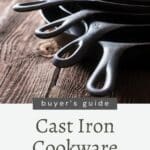
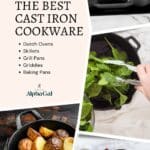
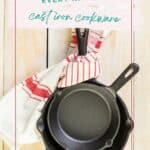
Cast iron cookware is renowned among cooks of all skill levels and generations. This timeless cookware is as reliable and durable as it is beautiful. But which piece is right for you? This guide will help you decide.
The information provided on this site is based on my personal experience living with alpha-gal syndrome. I consistently cite and link to expert sources, but nothing published on this site should be perceived as medical advice.
Alpha-gal sensitivities vary by person. You should understand your dietary restrictions, making any adjustments needed, and directing any questions to your physician.
Whenever I reminisce about childhood visits to my grandparents’ house, one of the first memories that comes to mind is their well-used cast iron skillet. They had a ritual. My grandpa would cook the bacon, filling the kitchen with a tantalizing aroma. Then my grandmother took over, skillfully frying eggs in the “liquid gold” that remained, each with slightly crispy edges and a tender, ready-to-be-dunked with bread yolk.
Sadly, both of my grandparents are now both gone. And, due to my alpha-gal syndrome diagnosis, real bacon is no longer on the menu. But I still use my grandparents’ cast iron skillet nearly every morning when I fry or scramble eggs.
While my grandparents were skilled at making everything from a filling breakfast to hearty German dinners in that one cast iron skillet, I’ve added other pieces to my kitchen over the years. This guide will help you identify and select the best pieces of cast iron cookware for your kitchen.
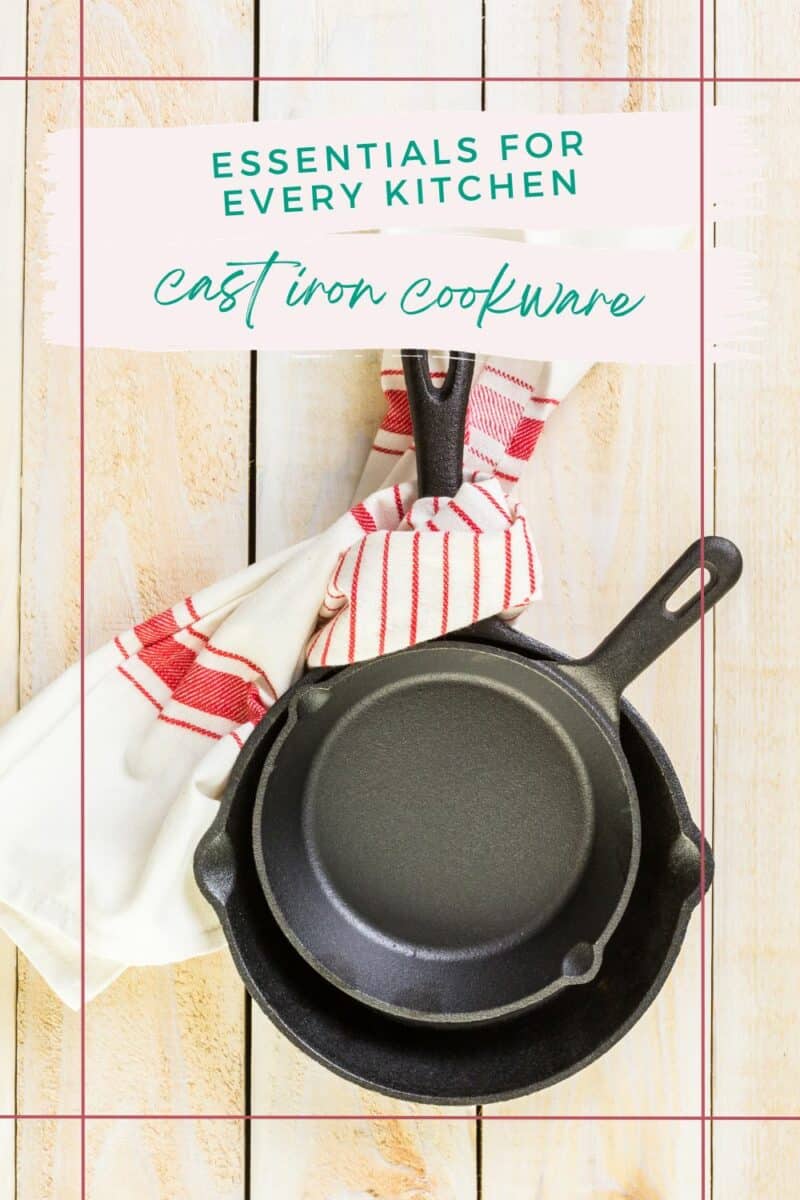
To help offset the costs of running SageAlphaGal.com, you’ll find affiliate links lightly sprinkled throughout the site. If you choose to make a purchase via one of these links, there’s no additional cost to you, but I’ll earn a teeny tiny commission. You can read all of the legal blah blah blah (as my little niece says) on the full disclosure page.
In This Article
Considering Cast Iron Cookware
Whether you’re looking at cast iron for the first time or ready to pick up a new piece for your collection, here are a few things to keep in mind.
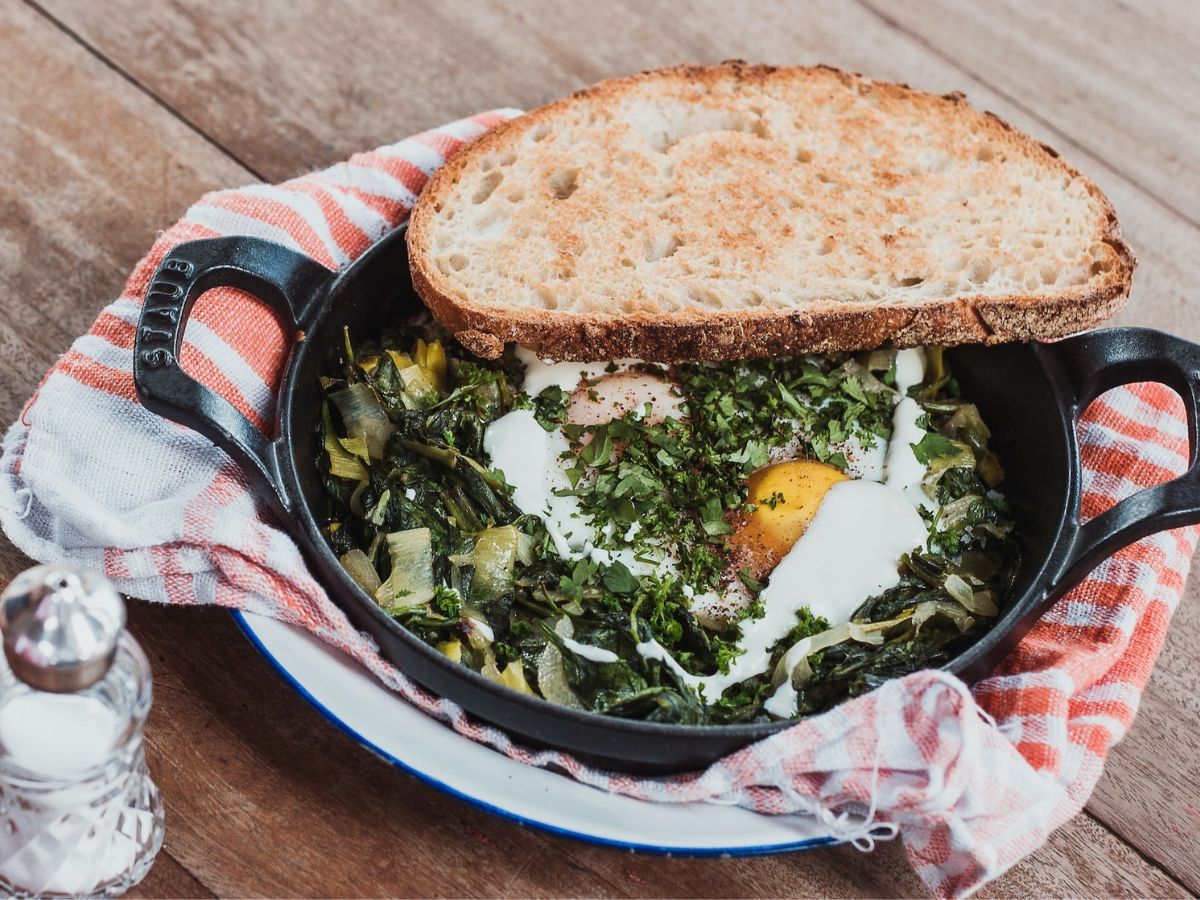
What Size Best Suits Your Needs?
Do you typically cook for one to two people or a full house the size of a small army? Because I primarily focus on single-batch recipes and meal prep options, the list below contains my recommendations for a typical home chef cooking for two to four people.
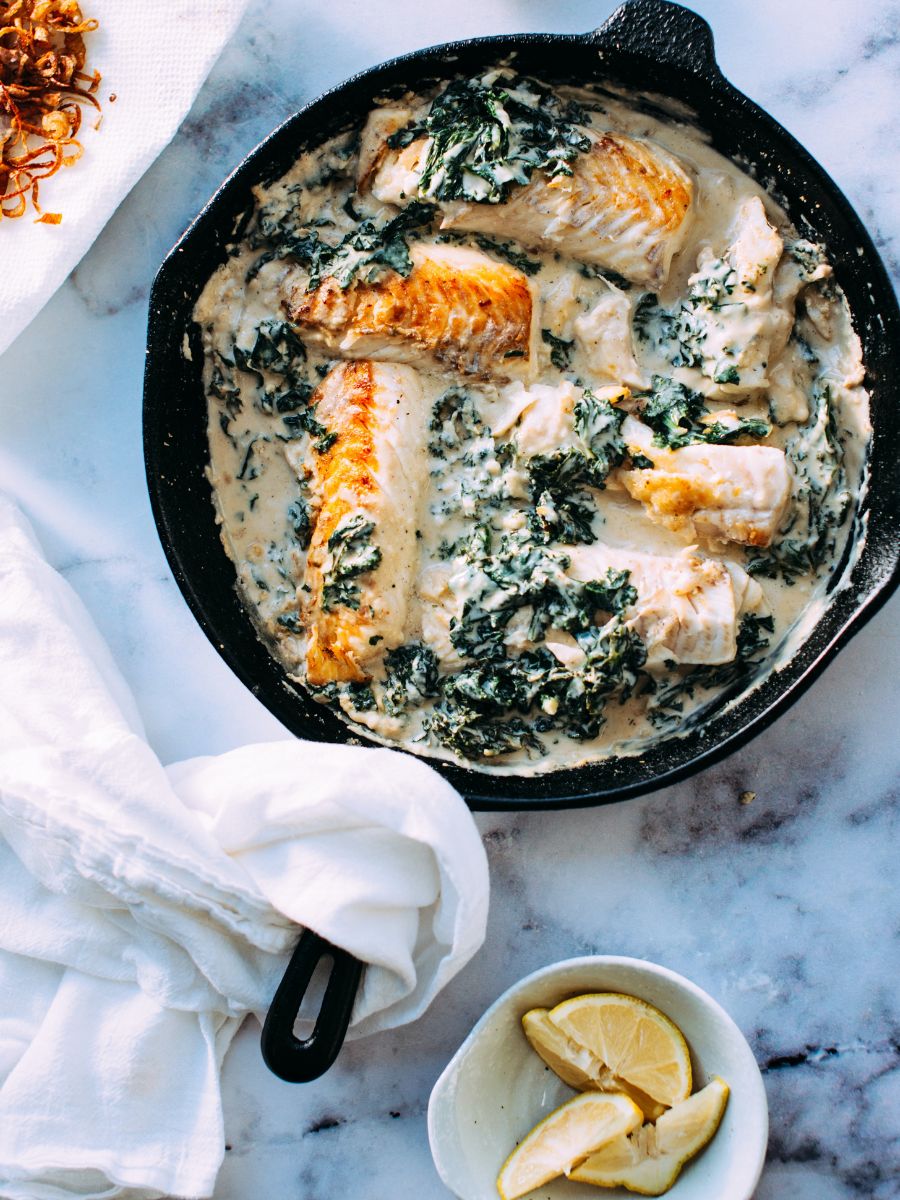
What Kind of Cooking Surface Do You Need?
As you think about the kinds of dishes you make most frequently, what surfaces are the best fit for you? There are several options:
- wide, flat, and open
- enclosed
- high or short sides
- ridged or not
- round, square, or rectangular
Best Cast Iron Cookware
Cast iron equipment ranges from pots and pans to tea kettles and casserole dishes, so choosing can be overwhelming. What are the most practical pieces for daily use? Maybe you already have a foundation and are looking for the next best thing. In that case, what is worth consuming your precious cabinet space?
I reviewed options from cast iron griddles to grill presses, examining their functionality, versatility, care instructions, and practicality for home cooks. My results boiled down to these top five picks that can benefit every kitchen.
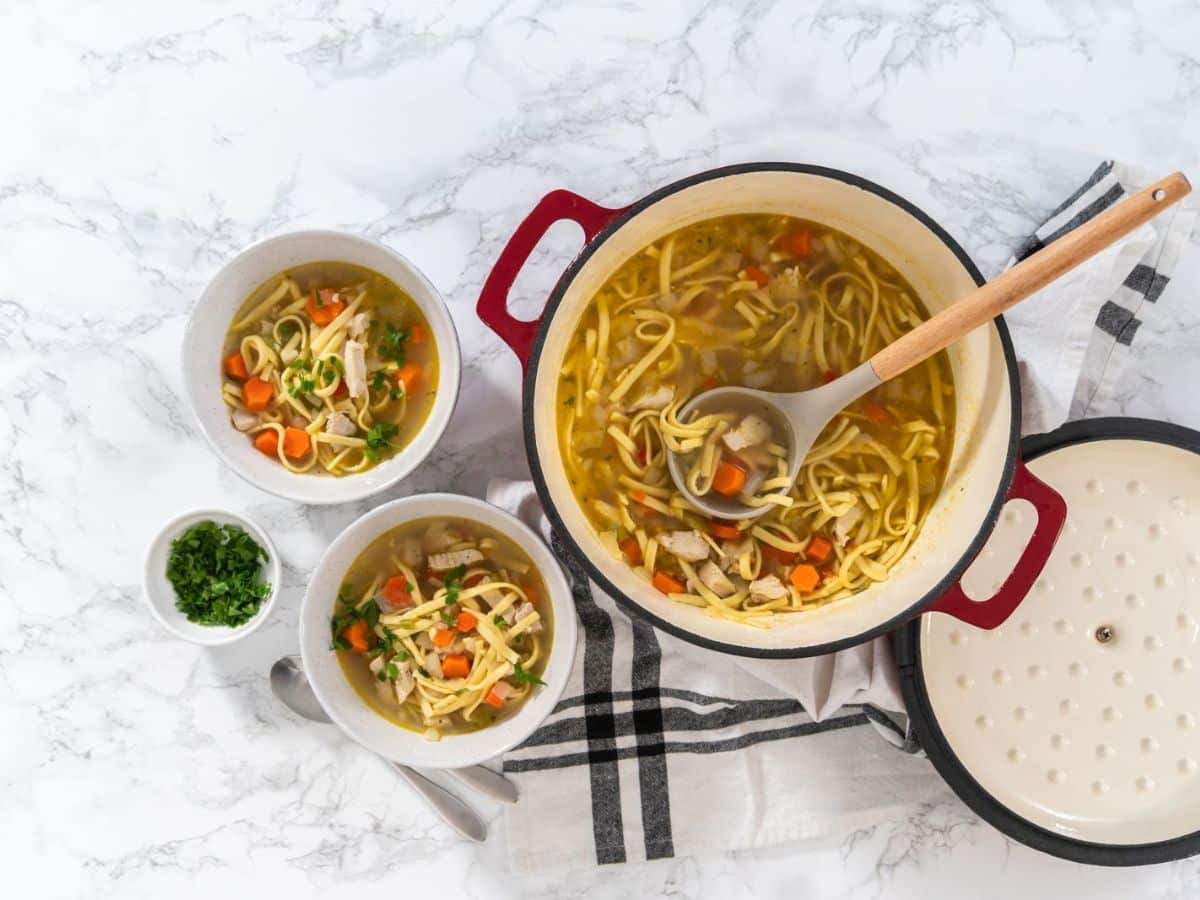
1. Cast Iron Dutch Oven
The most iconic image of cast iron cookware is a Dutch oven. This heavy-duty, high-sided cooking pot has a tight-fitting lid and two comfortable handles. Its ability to masterfully retain heat and transition between cooking surfaces makes it a star in the kitchen.
This pot can be a go-to tool and help simplify your life the more you use it for easy one-pot meals. Plus, placing the Dutch oven on a hot pad at the table is a great way to minimize extra serving dishes, save time cleaning up and bring an aesthetically pleasing feature to the table.
Pros
- Versatile: Allows for a range of cooking methods, including braising, simmering, stewing, baking, and frying.
- Heat-retention: Dutch ovens retain heat well due to the high walls and tight-fitting lid. This ensures even cooking throughout the food, which produces succulent meat, melded flavors, and thick sauces.
- Oven-safe: Provides a seamless transition from browning or sautéing on the stovetop to baking in the oven. You can also bake authentically rustic bread in a Dutch oven.
- Kitchen-to-table serving: Finish cooking and bring the Dutch oven directly to the table to serve.
Cons
- Weight: This is the heaviest design because, compared to other options, the pot has the most surface area and volume. Also, the additional lid adds to the overall weight.
- Slow heating and cooling: A Dutch oven takes longer to heat up and cool down than other options and generally isn’t functional for quick meals. However, this is what makes it ideal for slow cooking and braising.
I recommend the six-quart Dutch oven. Smaller options are better for sauces or side dishes, but six quarts is great for baking artisanal bread, braising roasts, and simmering stew. Anything bigger gets heavy, especially once the lid is on.
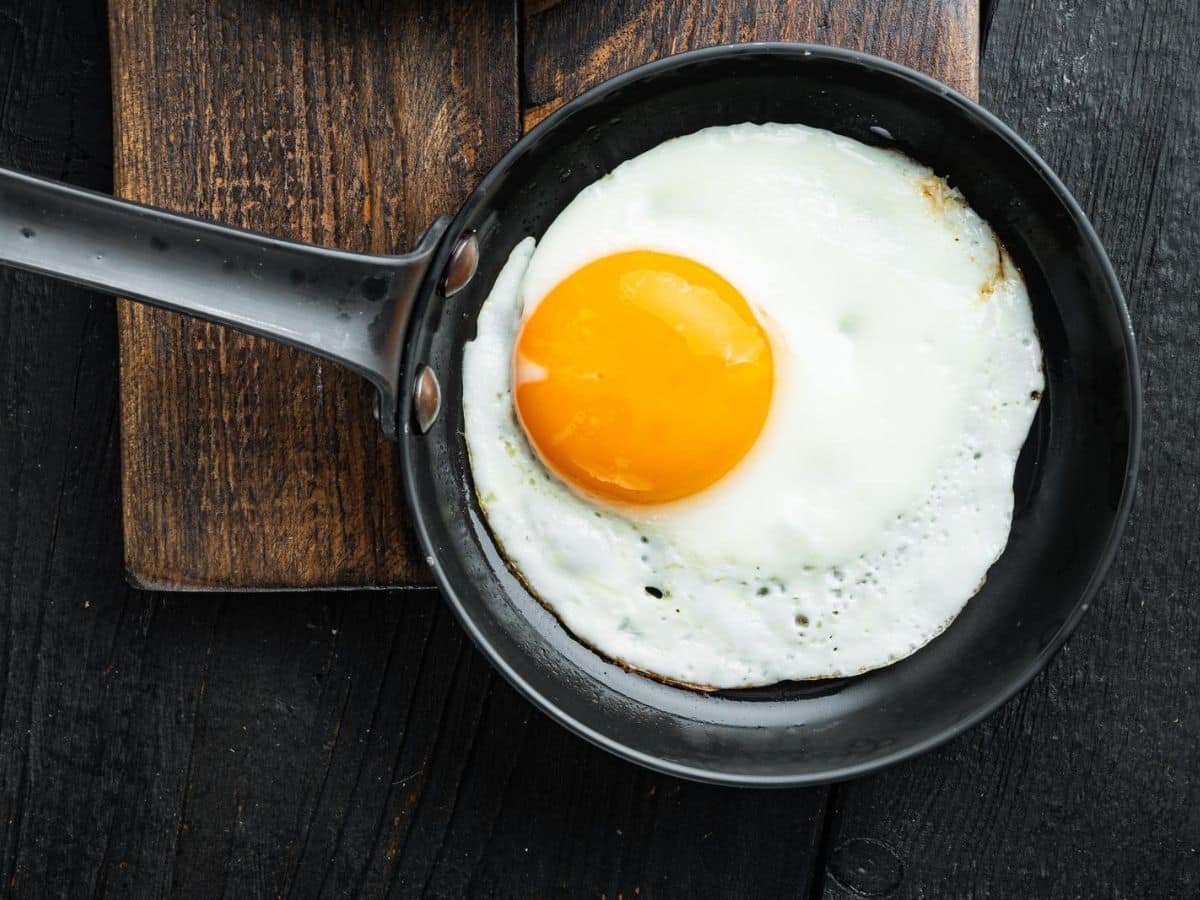
2. Cast Iron Skillet
With a smooth surface and long handle, a traditional cast iron skillet distributes heat evenly across a seasoned, nonstick base. It’s a great option for cooking dishes from vegetable noodles to frozen pizza.
Unlike a Dutch oven, a skillet has a shallow depth that conducts heat quickly, so you can sear meat, bake cornbread, and scramble eggs.
Pros
- Versatile: Use for searing, sautéing, pan-frying, stir-frying, baking, braising, and roasting.
- Heat-retention: The open shape of a skillet allows it to heat up quickly, making it ideal for fast cooking.
- Oven-safe: The cast iron skillet’s oven-safe design facilitates your ability to sauté a base of onion and garlic for a frittata before baking it to perfection.
- Kitchen-to-table serving: Similar to a Dutch oven, a cast iron skillet full of nachos or paella looks especially impressive on the table.
Cons
- Weight: The cast iron skillet can be heavy.
- Limited depth: Skillets do not have tall walls like a Dutch oven or saucepot. Therefore, they are not a good option for slow cooking, soups, or making dishes with large volumes.
- Not for delicate foods: The large surface area is not a good choice for delicate foods like sauces, custards, or chocolate that require precise temperature control.
I recommend a pre-seasoned cast iron skillet. A 12-inch diameter is ideal for most home kitchens because it provides a cooking surface of around nine to ten inches, suitable for meals serving two to four people.
Sage Advice: Once you find the perfect cast iron skillet, here are 37 cast iron skillet chicken recipes to try!
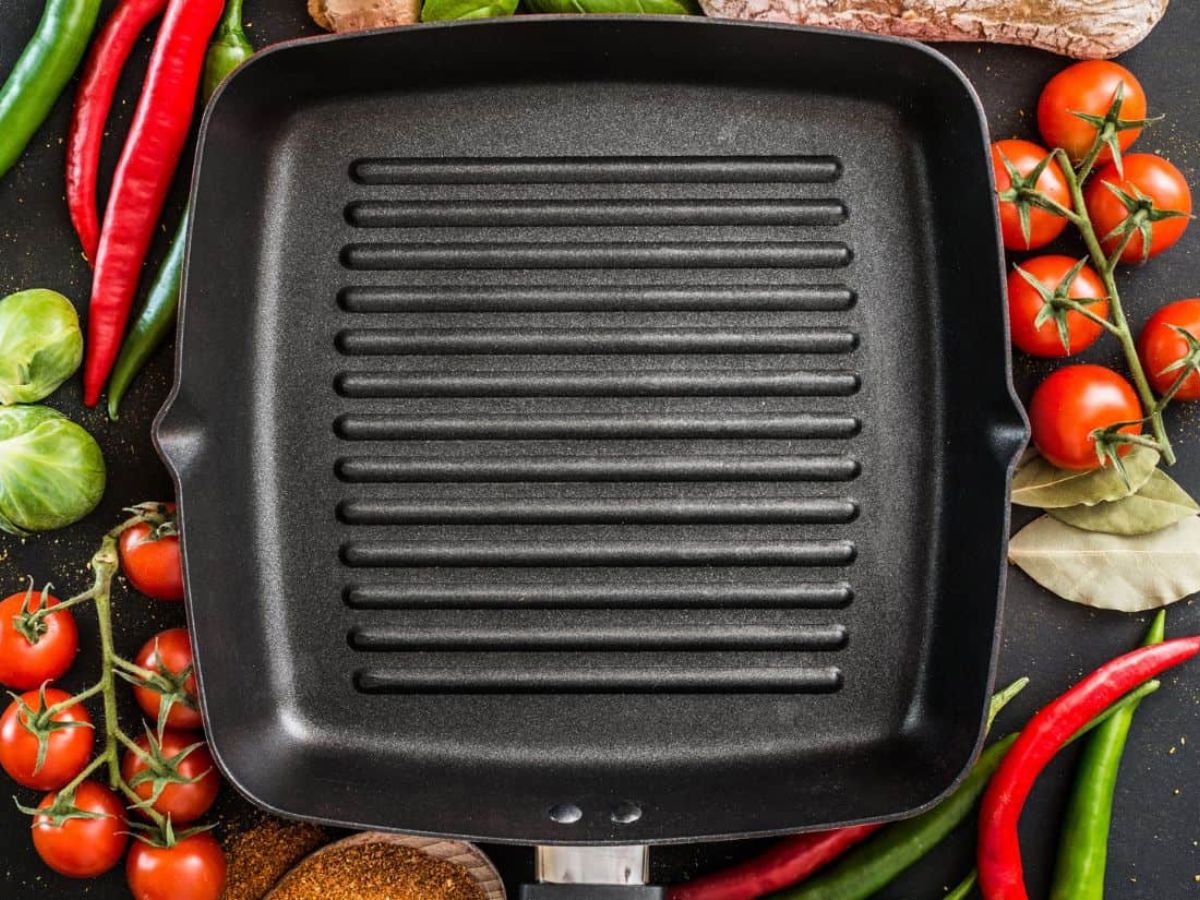
3. Cast Iron Grill Pan
A cast iron grill pan lets you enjoy the flavor and effect of outdoor grilling without investing in a large grill. This is a great solution for people living in apartments, tiny homes, or areas too cold to cook outside.
Cast iron grill pans are usually square, with ridges across the bottom that mimic the grates on a traditional grill. However, you will find grill pans shaped like classic cast iron skillets. And, my personal favorite, a reversible grill pan that does double-duty as a griddle.
Pros
- Grilled texture: Get the juicy texture of grilled chicken without needing an outdoor grill.
- Grill marks: Enhance the visual appeal of food with the classic look of grill marks.
- Versatile: Suitable for meat, vegetables, poultry, fish, seafood, and even fruit.
- Low-fat cooking: The raised ridges allow fat to render as it heats and drip away from the food as it cooks.
Cons
- Cleaning: The grooves make these pans more challenging to clean than flat skillets. However, I use custom grill pan scrapers that fit perfectly and make cleaning more manageable.
- Limited smoke flavor: Pan-grilled food might have a similar texture to outdoor grilling, but it doesn’t have the same smoky flavor.
- Limited space: Grill pans are smaller than skillets and griddles. You may need to cook in batches which takes more time.
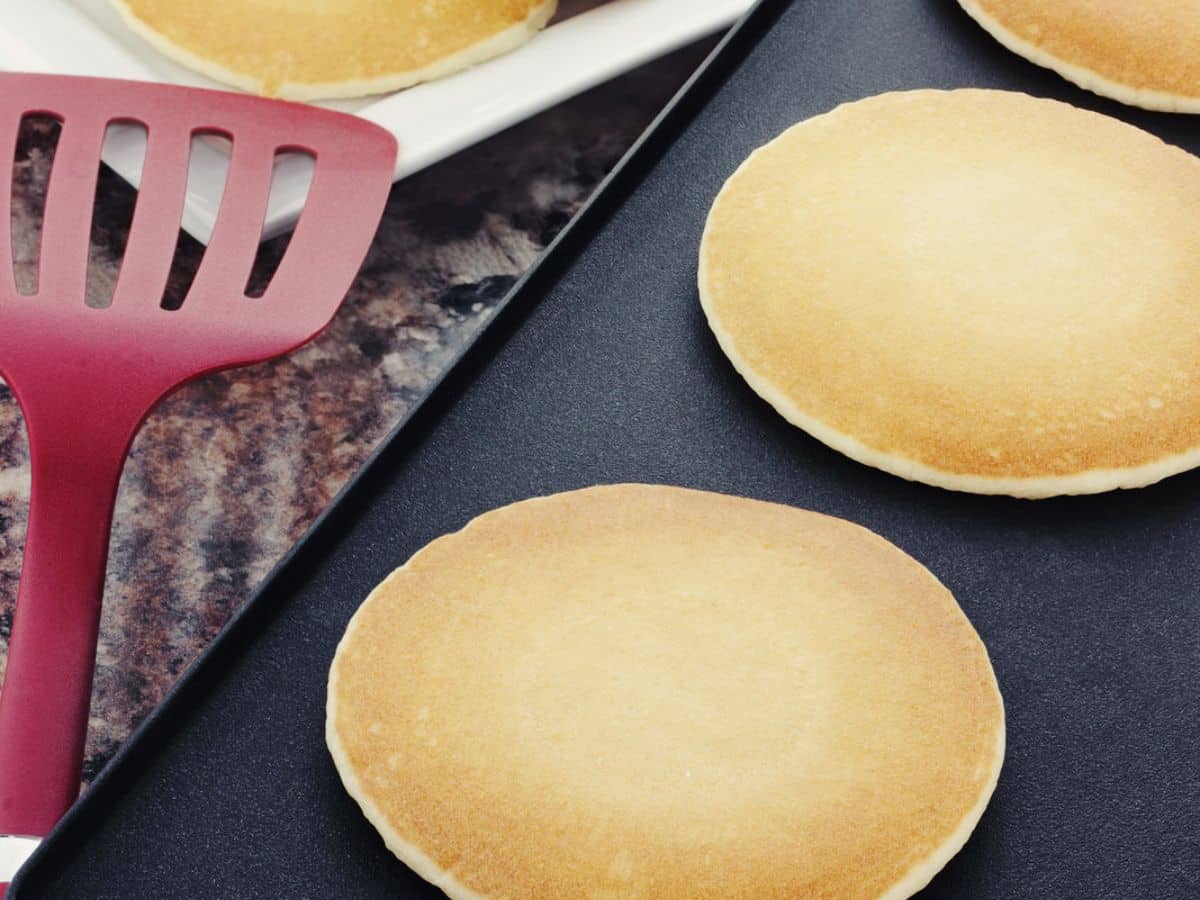
4. Cast Iron Griddle
Similar to a skillet, cast iron griddles have a flat cooking surface. However, they may be rectangular or circular, typically with a minimal lip around the edge to contain the food.
Pros
- Lightweight: Griddles are the lightest and easiest to handle of all cast iron cookware, requiring minimal effort.
- Quick to heat: A griddle is the fastest piece of cast iron cookware to heat and cool down.
- Versatile: Excellent for pancakes, French toast, eggs, and bacon.
- Spacious: More than a skillet, the griddle offers an open cooking surface that allows you to cook multiple items simultaneously.
Cons
- Minimal volume: Because there are no walls to this cooking surface, liquids and high-volume recipes are difficult to cook.
- Lack of height: Similarly, tossing ingredients for a stir-fry or stirring without spilling is problematic on a griddle.
Overall, griddles are less versatile than a Dutch oven or skillet. Still, they are an excellent addition to any kitchen due to their open surface, making it easy to cook and flip foods evenly. Griddles are the easiest type of cast iron equipment to clean because they have the fewest angles and crevasses.
I recommend a cast iron griddle to home cooks who frequently cook dishes like hot cakes, sandwiches, quesadillas, and fried cheese.
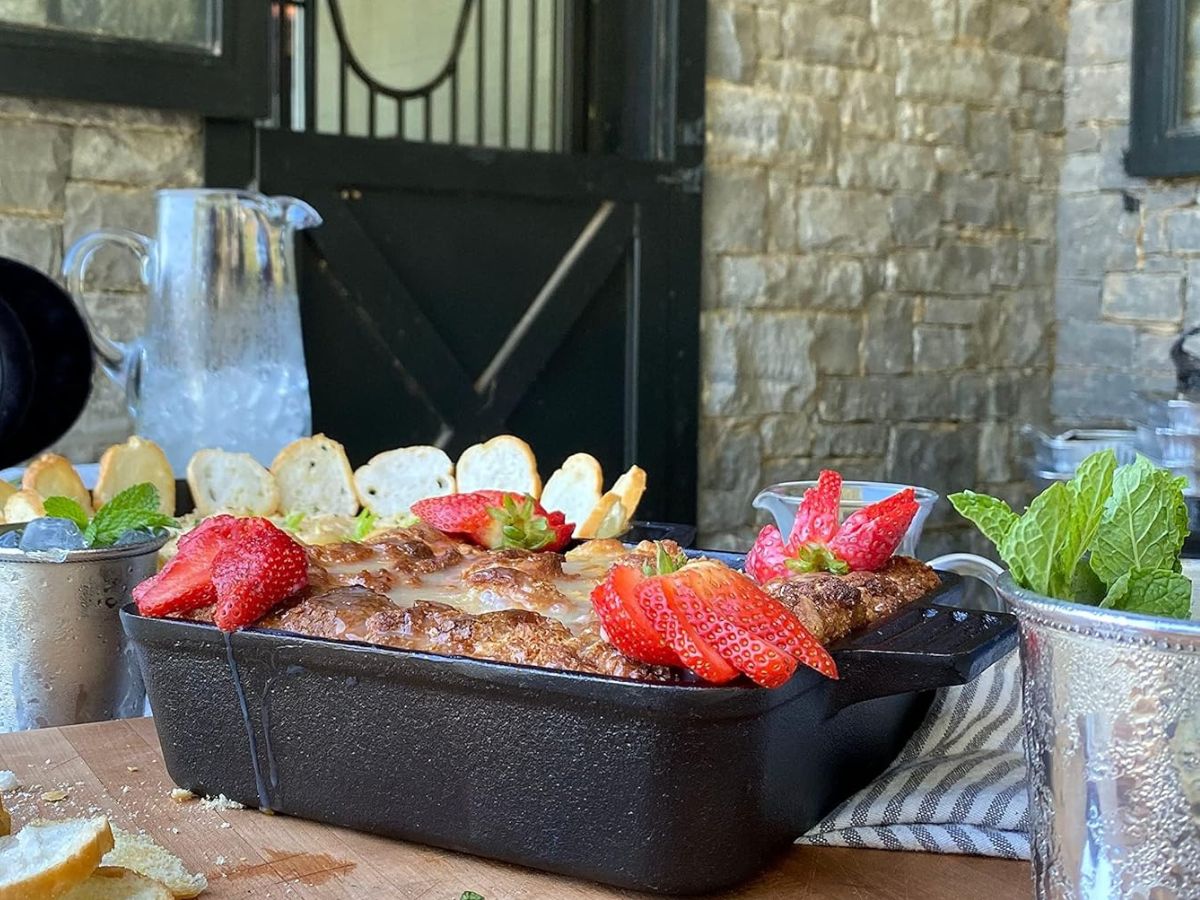
5. Cast Iron Baking Pan
A cast iron baking pan is also known as lasagna dish, casserole dish, or roasting pan, this item is rectangular with four walls. It’s another all-in-one dish you can take from the stove to the oven and then serve at the table. You’ll want one for baking meals like cheesy keto casserole throughout the year, cobblers in the summer, and Shepherd’s pie in the fall.
Pros
- Balanced weight: The wide rectangle is easy to handle and has two handles on either side that help distribute the weight.
- Heat-retention: Insulates food well, keeping it warm, even after it’s been removed from the oven.
- Versatile: It can bake bread, rolls, cakes, and pies — as well as cook casseroles and roasted vegetables.
- Beautiful: My favorite choice is a painted enameled cast iron piece that adds a bright accent to the kitchen.
- Easy to clean: With a smooth surface and clean lines, clean-up is a breeze.
Cons
- Fragile: Be careful not to scratch or chip the enamel coating.
- Bulky: This shape may be more difficult to store than a griddle, grill pan or skillet.
- Longer preheating time: Preheating yields the best results. This may add to the total cooking time of a recipe.
Cast iron baking dishes retain heat well, promoting uniform baking and moist results. I love the ability to cook sweet and savory dishes for a crowd. Plus, bringing potluck-ready food from a hot oven to a festive gathering in such an eye-catching presentation is a huge win.
I recommend a cast iron baking dish to aspiring bakers, those looking for a reliable tool for weeknight dinners, and everyone who appreciates beautifully presented food.
Cast Iron Conclusions
Each piece of cast iron cookware brings a unique value to the kitchen, allowing you to explore a wide range of cooking techniques and flavors. Over time, you can continue to collect and build your cast iron cookware collection until you have them all.
Taking care of your cast iron cookware is key to preserving the equipment for years to come. Be sure to follow these seasoning steps when you bring one of these quality cookware pieces home, and use proper cast iron cleaning techniques.
What’s Your Favorite Cast Iron Cookware?
What’s your go-to piece of cast iron cookware? Is there a dish that comes out perfectly every time in your cast iron? I’d love to hear your stories, thoughts, and tips in the comments below.
Portions of this article originally appeared on Food Drink Life.
Thank you for sharing!

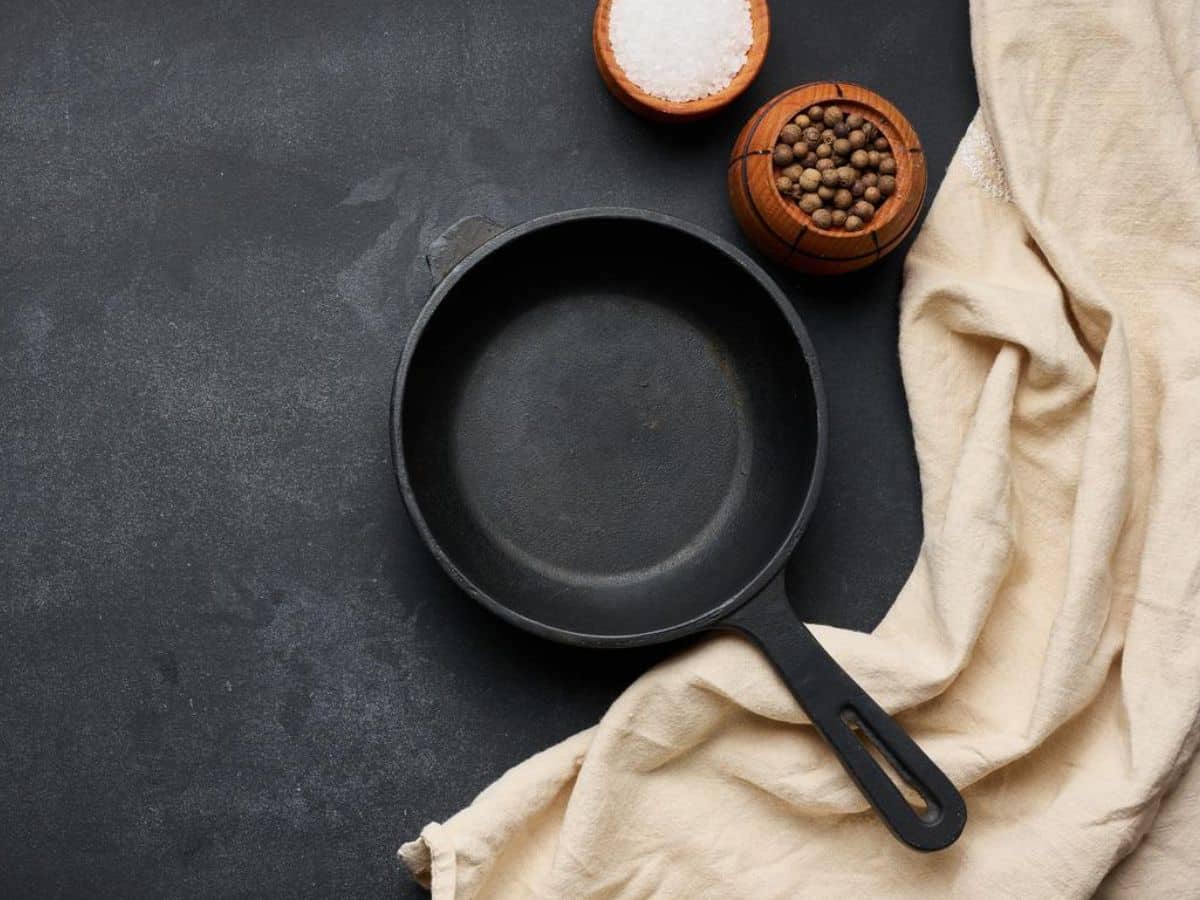
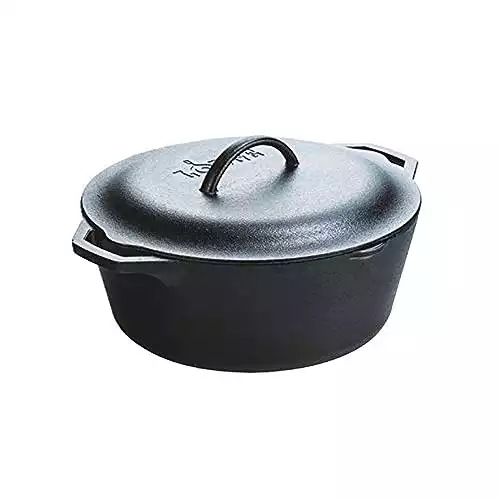
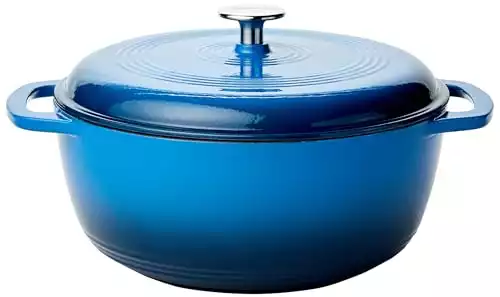
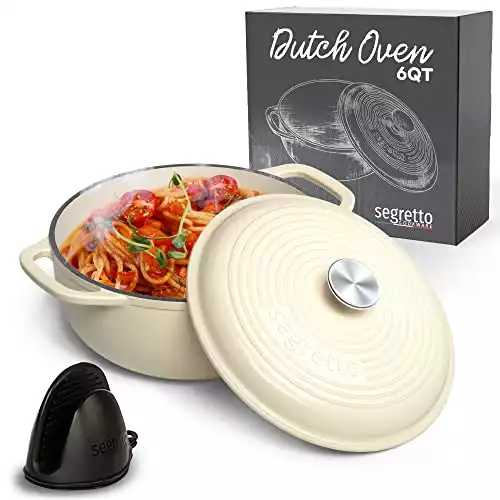
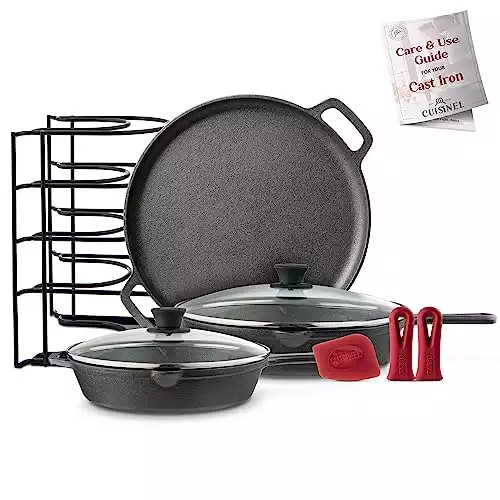
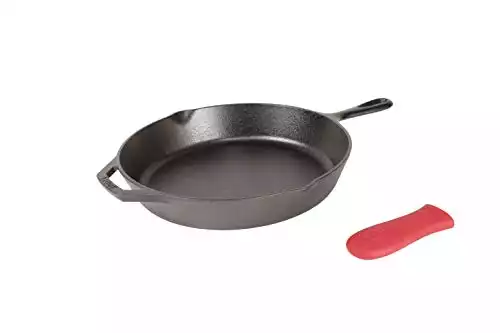
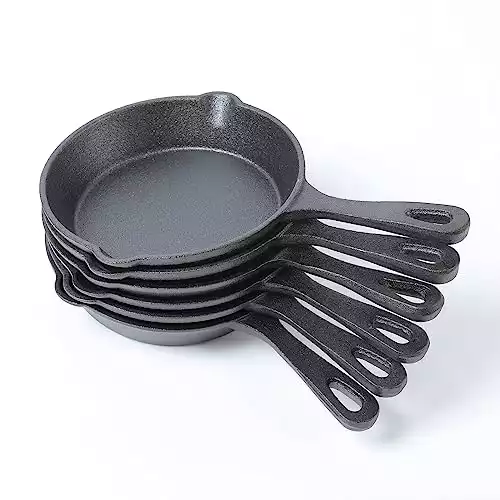
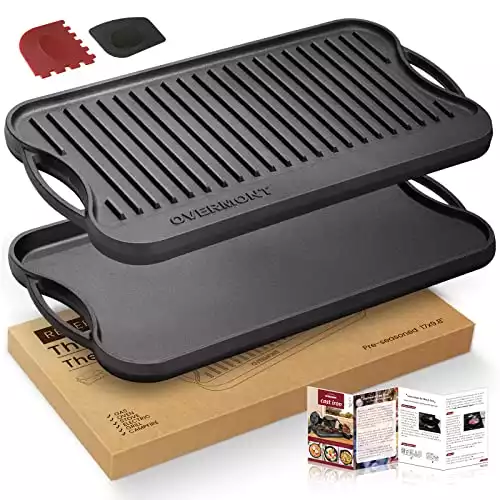
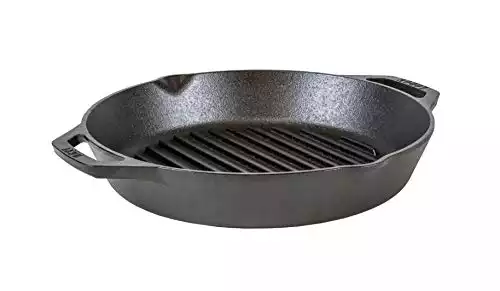
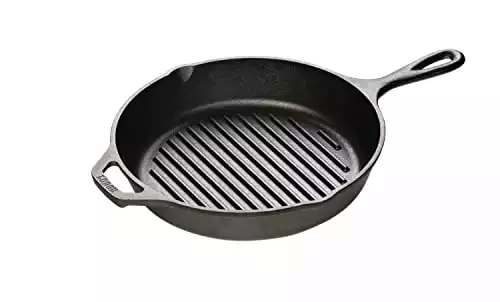
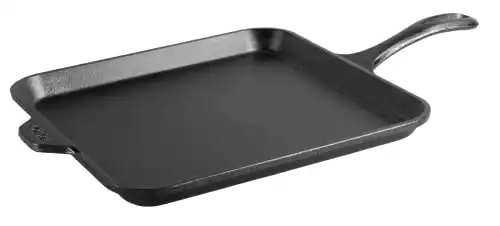
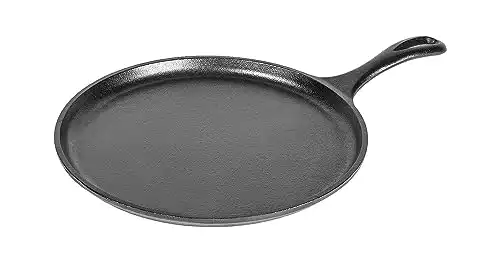
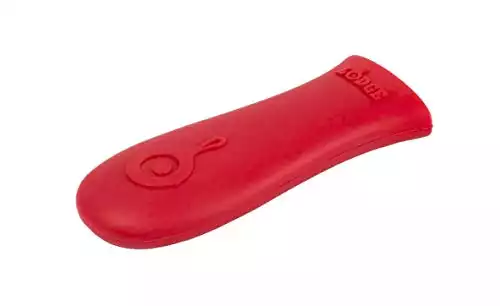
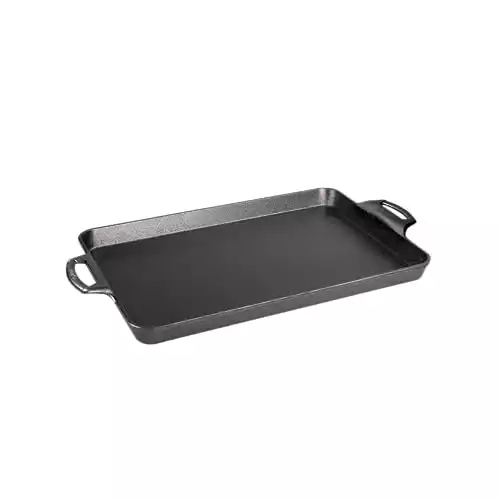
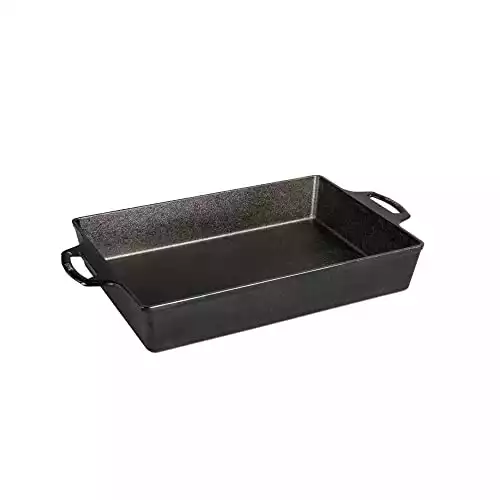
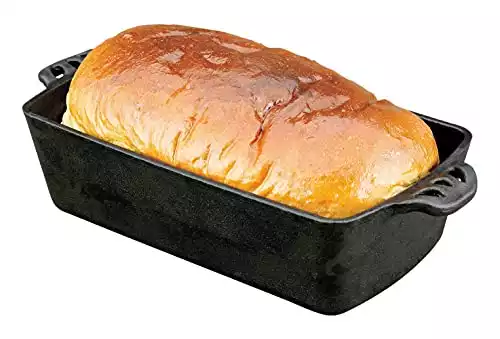
Thanks for sharing. I have and love cast iron skillets that are on their third generation on my mother in law’s side and second on my mom’s (not to mention some smaller pieces I’ve bought along the way)! Oh if these pans could talk, the stories and recipes they’d share would be priceless! I was so excited to see from this article you can continue to use them with alpha gal. I had read of some people having to get rid of all their kitchenware from being so reactive. Thanks for all you are doing to help us to learn and grow in all of this. God bless!
Hi Marcy! Please be mindful of your sensitivity level, how your cast iron was seasoned, etc. Three people at my house have alpha-gal, including my oldest daughter who is the most sensitive of all of us. We were able to reseason and use all of our cast iron cookware without issue. But, if you’re one of the super duper sensitive alpha gals, and your well-loved cast iron pans were seasoned with bacon grease and used exclusively to sear steaks, I want you to be extra careful!